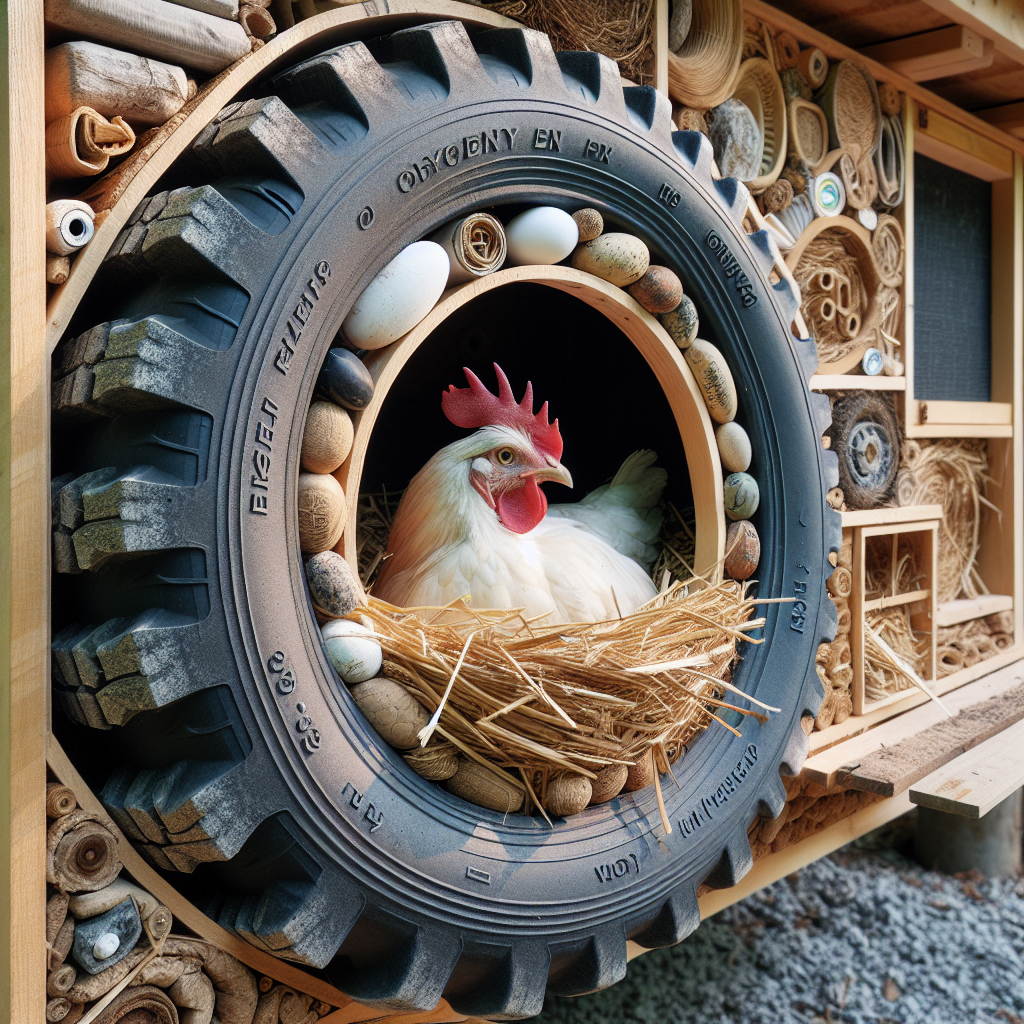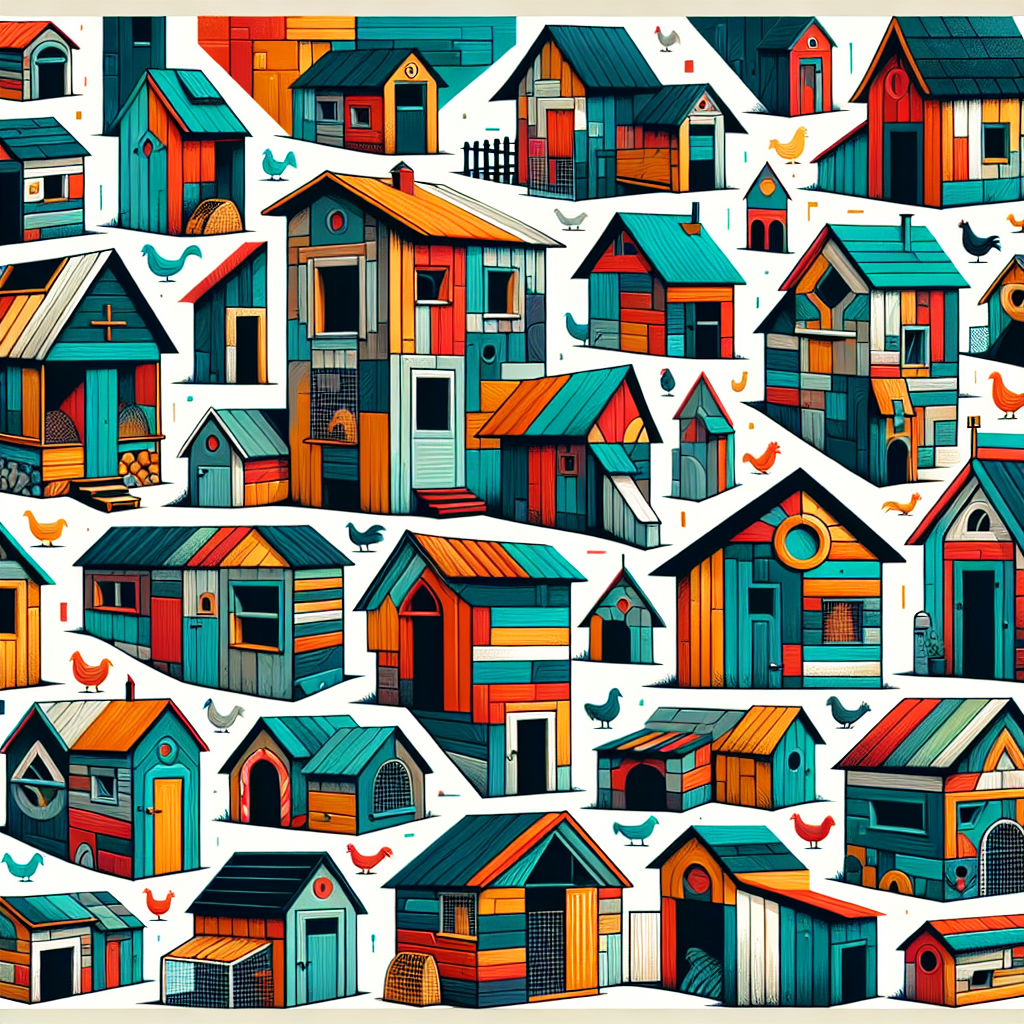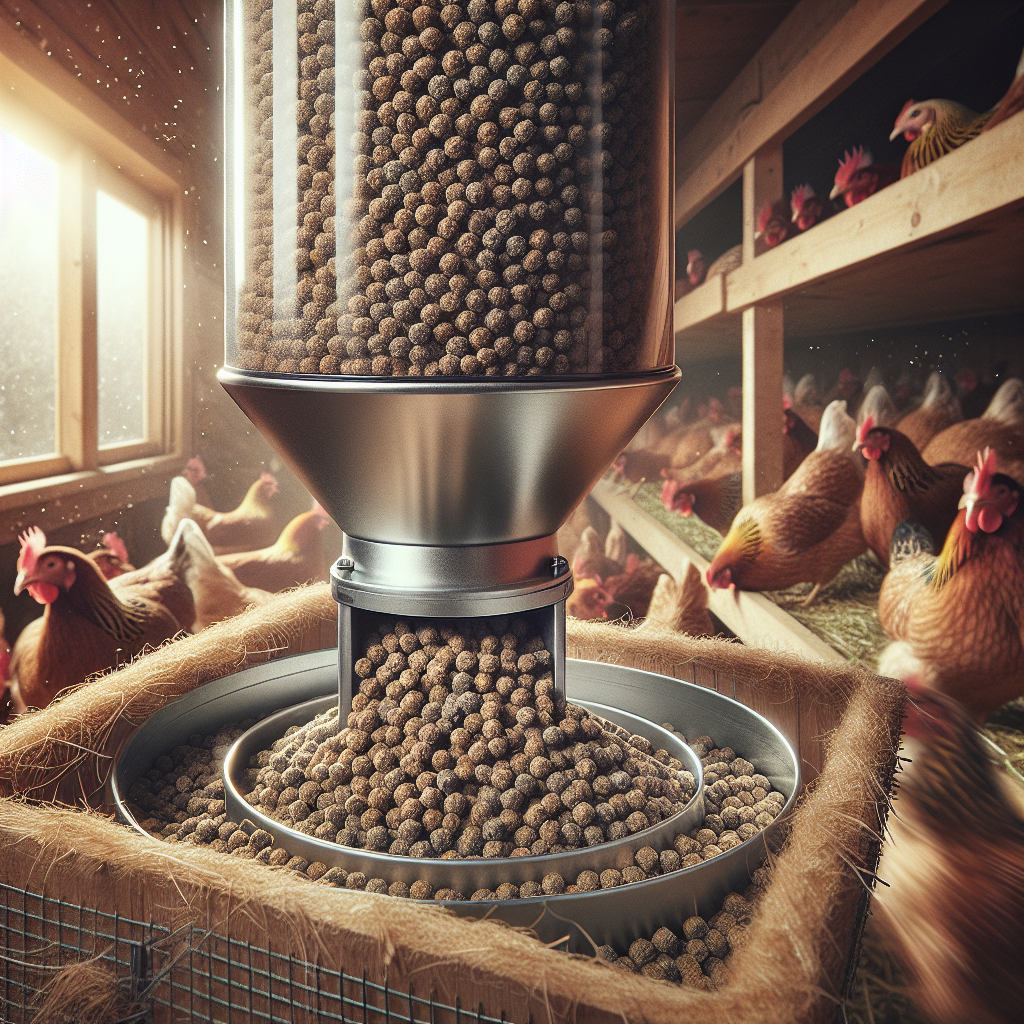If you’re considering building a chicken coop, you might be wondering if it’s possible to incorporate sustainability principles in its design. The answer is a resounding yes! By adopting a more eco-friendly approach, you can create a chicken coop that not only provides a comfortable and healthy environment for your feathered friends but also minimizes its impact on the environment. From using recycled materials to implementing renewable energy sources, there are numerous ways you can make your chicken coop design sustainable and environmentally conscious. In this article, we will explore some practical tips and ideas to help you integrate sustainability principles into your chicken coop design, making it a win-win for both your chickens and the planet. Yes, you absolutely can! Sustainable chicken coop design is not only beneficial for the environment, but also for the well-being of your chickens. By making environmentally conscious choices and implementing sustainable practices, you can create a chicken coop that is efficient, comfortable, and promotes the health and safety of your feathered friends. In this article, we will explore various aspects of sustainable chicken coop design and provide you with practical tips on how to incorporate these principles into your own coop.
Choosing Sustainable Materials
When it comes to building a sustainable chicken coop, the choice of materials is crucial. Opt for materials that are renewable, recyclable, and have a low environmental impact. For the structure of the coop, consider using sustainably harvested wood or recycled plastic lumber. These materials are not only durable, but also help reduce deforestation and waste. Additionally, you can incorporate natural materials such as straw, hay, or bamboo for insulation and bedding purposes. By selecting sustainable materials, you are taking a step towards reducing the carbon footprint of your coop.
Using Recycled Materials
Another way to enhance the sustainability of your chicken coop design is by incorporating recycled materials. Repurposing items such as old pallets, doors, windows, or even reclaimed wood can give your coop a unique and eco-friendly touch. Not only does this help reduce waste, but it also adds character to your coop. Get creative and think outside the box when it comes to sourcing materials for your project. You may find hidden treasures in your local community or online platforms where people often give away or sell unwanted items.
Designing for Energy Efficiency
Designing an energy-efficient chicken coop not only reduces your environmental impact, but it can also save you money in the long run. Consider incorporating features that maximize the use of available resources and reduce energy consumption. One of the most effective ways to achieve this is by utilizing natural light. Position windows strategically to allow ample sunlight into the coop during the day. This not only provides a healthier environment for your chickens, but it also helps reduce the need for artificial lighting. When designing the layout of your coop, also take into account the prevailing winds in your area. By properly orienting the coop, you can take advantage of natural ventilation and reduce the need for powered ventilation systems.
Maximizing Use of Available Resources
To further enhance the sustainability of your chicken coop, maximize the use of available resources. One way to achieve this is through rainwater harvesting. Set up a system to collect and store rainwater that can be used for watering and cleaning purposes. This not only reduces your reliance on freshwater sources, but it also helps conserve water, especially during dry seasons. Additionally, implement composting systems to manage organic waste from the coop. Composting not only helps reduce waste, but it also produces nutrient-rich soil amendments that can be used in your garden or landscaping.
Promoting Natural Ventilation
Proper ventilation is essential for maintaining a healthy and comfortable environment for your chickens. By promoting natural ventilation, you can reduce the need for powered ventilation systems and decrease your energy consumption. One key aspect of natural ventilation is the proper orientation of your coop. Position the coop in a way that takes advantage of prevailing winds to create airflow. Additionally, carefully plan the placement of windows and vents to optimize cross ventilation. This will help remove excess moisture, odors, and ensure a constant supply of fresh air for your chickens. In some cases, you may also consider incorporating passive ventilation systems, such as adjustable vents or louvers, to further enhance air circulation.
Creating a Healthy and Comfortable Environment for Chickens
Adequate space and roosting areas are vital for the health and well-being of your chickens. Make sure to provide enough space for each bird to move around comfortably. Overcrowding can lead to stress, disease, and reduced egg production. Additionally, design roosting areas that are elevated and provide enough perching space for all your chickens. This mimics their natural behavior and helps prevent leg and foot injuries. Another important aspect of chicken coop design is the nest box. Optimal nest box design includes providing a secluded and dark space for chickens to lay their eggs. This helps reduce stress and encourages natural egg-laying behavior. Finally, ensure proper insulation in your coop to maintain a comfortable temperature year-round. This can be achieved through the use of insulating materials or by designing the coop in a way that takes advantage of natural insulation properties of the materials used.
Implementing Sustainable Waste Management Practices
Proper waste management is essential for maintaining a clean and healthy environment for your chickens. By implementing sustainable waste management practices, you can minimize the environmental impact of your coop and even turn waste into a valuable resource. Start by composting chicken waste. This not only reduces waste volume but also produces nutrient-rich compost that can be used as a natural fertilizer in your garden or landscaping. Additionally, consider recycling materials such as eggshells or cardboard bedding. By diverting waste from landfill and utilizing it in a sustainable manner, you are reducing your environmental footprint and promoting sustainability.
Choosing Sustainable Feeding and Watering Systems
Feeding and watering systems in your chicken coop also play a role in promoting sustainability. Opt for recyclable or reusable feeders and waterers made from materials such as stainless steel or food-grade plastic. This reduces waste and ensures longevity of the equipment. Additionally, consider strategies to reduce feed waste, such as using feeders with built-in barriers or providing feed in smaller quantities to prevent spillage or spoilage. Furthermore, implement water conservation measures, such as using a gravity-fed watering system or installing water-saving devices. This not only reduces water waste but also helps save on water bills.
Incorporating Green Roofs and Living Walls
Green roofs and living walls are innovative ways to incorporate sustainability into your chicken coop design. These features offer numerous benefits, both for the environment and your chickens. Green roofs, also known as vegetated roofs, consist of a layer of vegetation that provides insulation, reduces stormwater runoff, and improves air quality. Consider incorporating a small green roof on top of your chicken coop to enhance insulation properties and create a habitat for beneficial insects and birds. Similarly, living walls, which are vertical gardens, can be implemented on the exterior walls of the coop. These walls not only enhance aesthetics but also promote biodiversity and provide a natural cooling effect.
Ensuring Predator Protection and Security
When designing your chicken coop, it’s essential to prioritize predator protection and security. By using sustainable and natural methods, you can minimize harm to predators and protect your chickens. Install secure fencing around the coop to prevent access by larger predators such as raccoons or foxes. Consider adding an apron or dig-proof barrier to deter burrowing animals. To enhance security, you can also incorporate a solar-powered security system. These systems use renewable energy and can provide peace of mind by deterring potential intruders and alerting you to any unusual activity around the coop.
Promoting Biodiversity and Habitat Conservation
Your chicken coop can be more than just a place for your chickens; it can also contribute to biodiversity and habitat conservation. Create a wildlife-friendly landscape around your coop by incorporating native plants that provide food and shelter for local species. This not only enhances the aesthetic value of your coop but also contributes to the overall health of the ecosystem. Additionally, consider providing habitats for native species, such as birdhouses or bat boxes, to encourage their presence and promote natural pest control. Avoid using harmful pesticides or chemicals that can harm beneficial insects or disrupt the balance of the ecosystem.
Seeking Certification and Building Standards
If you are truly committed to sustainable chicken coop design, you may consider seeking certification from sustainable building organizations or participating in sustainable farming programs. These initiatives provide guidelines and standards for sustainable practices in construction and farming. By meeting these standards and obtaining certification, you can showcase your commitment to sustainability and inspire others to follow suit. Additionally, participating in programs and events focused on sustainable farming can provide valuable knowledge and resources for implementing sustainable practices in your chicken coop and beyond.
In conclusion, integrating sustainability principles into your chicken coop design is not only feasible but also highly beneficial. By choosing sustainable materials, utilizing available resources, promoting natural ventilation, creating a healthy and comfortable environment for your chickens, implementing sustainable waste management practices, using sustainable feeding and watering systems, incorporating green roofs and living walls, ensuring predator protection and security, promoting biodiversity and habitat conservation, and seeking certification and building standards, you can create a chicken coop that is not only environmentally friendly but also provides a safe and enjoyable space for your feathered friends. By taking these steps towards sustainability, you are not only contributing to a healthier planet but also setting a positive example for others to follow.




